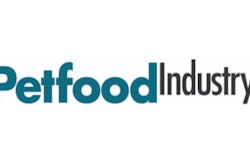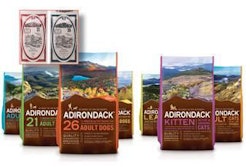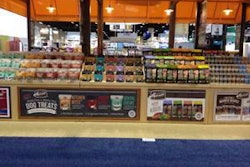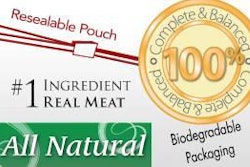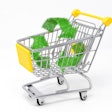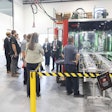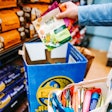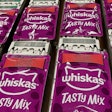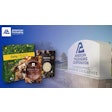Flexible packaging, better known by its nickname “plastic” packaging, has been an interesting development for those of us who have been along for the ride. When I wrote an article for Petfood Industry magazine in 1996 titled “Barrier Benefits: Reducing Oxidation Helps Preserve Flavors and Extend Shelf Life,” it was a relatively new idea to package petfood in a plastic bag. In fact, there was conventional wisdom at the time that said pets, and especially dogs, would not eat food stored in plastic bags. It was thought that plastic imparted some off-flavors and affected palatability. At the time, some of us plastic bag people were trying to convince the industry that the technology used to preserve flavor- sensitive human food products like gourmet coffee would work for petfood and actually help preserve the petfood better. Almost twenty years later, the plastic bag has proved to be successful as a way to package and market petfood.
If the trend of flexible packaging in the petfood industry continues to mirror the developments in specialty human foods, an increasing move towards more sustainable plastic packaging is on the horizon. As a guy who works for a plastic bag company serving both human food and petfood customers, I think I can say with some insight that today sustainability does not have the same impact on petfood packaging decisions than it does on its human food counterpart. But call it environmentally friendly, earth friendly, green or whatever, I believe we will see increasing demand for sustainable packaging for petfood as consumers look for it from petfood producers.
So what can we expect? First of all, the debate between the environmental impact of paper bags and plastic bags will continue. Paper bags are perceived as more environmentally friendly because paper is made from trees instead of fossil fuels. But studies have shown that the cradle-to-grave environmental impact of making a plastic package is actually less than that of a paper bag due to the efficient and clean process used to make natural gas into plastic and the more efficient transportation of lightweight plastic packaging[i].
Still, the “paper or plastic” question you hear in the grocery store may be asked more and more for petfood packaging. A good starting point for answering the sustainable question in petfood packaging is to realize that flexible packaging made from fossil fuels, while not sustainable forever, is the best, most efficient, economical way to extend the availability of our limited natural resources while we find a more sustainable option.
Second, you can expect a good amount of confusing and misleading claims that a package is recyclable or biodegradable. To a consumer, an item labeled as recyclable means they can place the item in their recycling bin and the trash man will take it away to be turned into some other useful product. Technically, almost everything can be labeled recyclable, including the desk I am sitting at to type this article. However, my local waste company is not going to recycle my desk if I drag it to the curb. There are no systems set up to do it. Similarly, some plastic packaging which technically can be recycled and might be touted as recyclable is not recycled because there are no means to collect and recycle it.
Another area of misinformation can be claims of biodegradability. These sometimes rely on studies showing microscopic surface disruption that is then extrapolated to say the product will break down years from now. These expensive and extensive studies are not easy to repeat, so the information gets handed down from one supplier to another losing any connection to reality. This realm of package labeling has gotten so confusing that the US Federal Trade Commission and some states have stepped in to prevent misleading biodegradability claims on packages.
Fortunately, good, common sense tests have also been published by ASTM International and the Organisation for Economic Cooperation and Development (OECD) where biodegradable or compostable packaging can be tested and certified by a third party laboratory to confirm that it will break down in twelve weeks at a reasonable temperature of 136 °F (degrading organic material generates heat) and create healthy compost capable of supporting seed growth.
Third, materials for flexible packaging have been developed that do not use fossil fuels and deplete the earth’s resources. Some of these will also biodegrade and/or compost. The more promising materials are PLA (polylactic acid), which is made from corn, and cellulose film (e.g., cellophane) made from wood pulp. However, there are some limitations to their strength and use at this time. Fossil-fuel-based plastic still outperforms them, and of course they are more expensive. However, inroads are being made with these materials on the human food side and could be used today for smaller petfood packages, like treat bags, that don’t require the strength needed for a 30-40 lbs. petfood bag.
[i] PEER REVIEWED FINAL REPORT LCI SUMMARY FOR EIGHT COFFEE PACKAGING SYSTEMS, Prepared for THE PLASTICS DIVISION OF THE AMERICAN CHEMISTRY COUNCIL by FRANKLIN ASSOCIATES, A DIVISION OF EASTERN RESEARCH GROUP, INC. Prairie Village, Kansas September, 2008.

